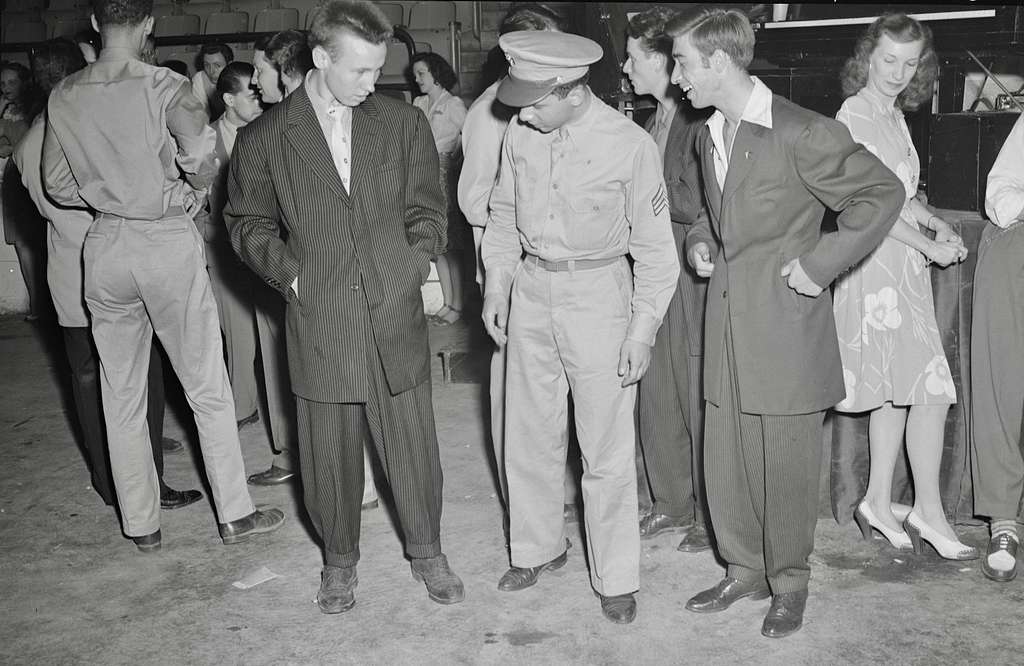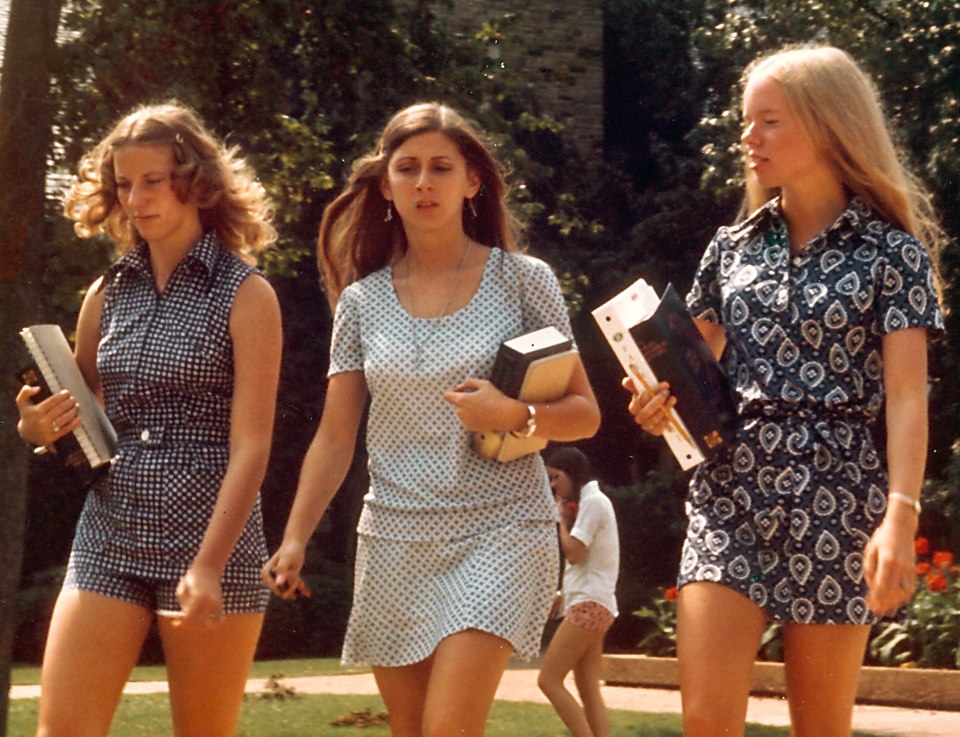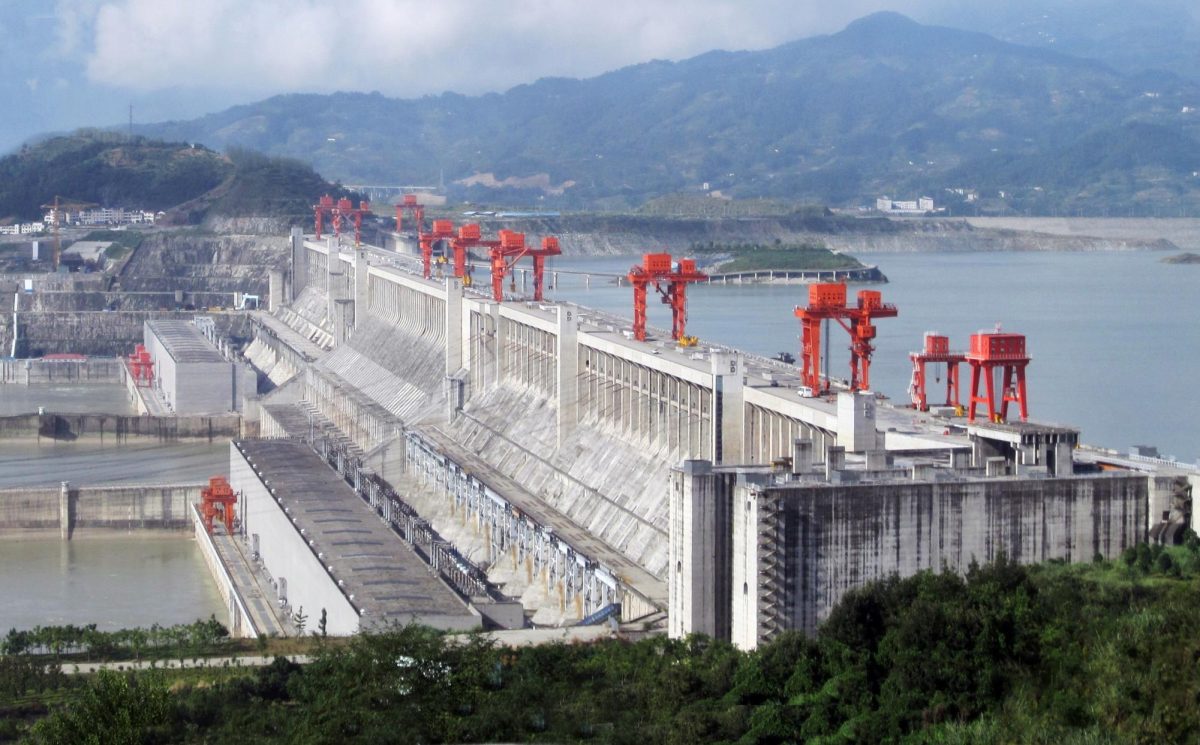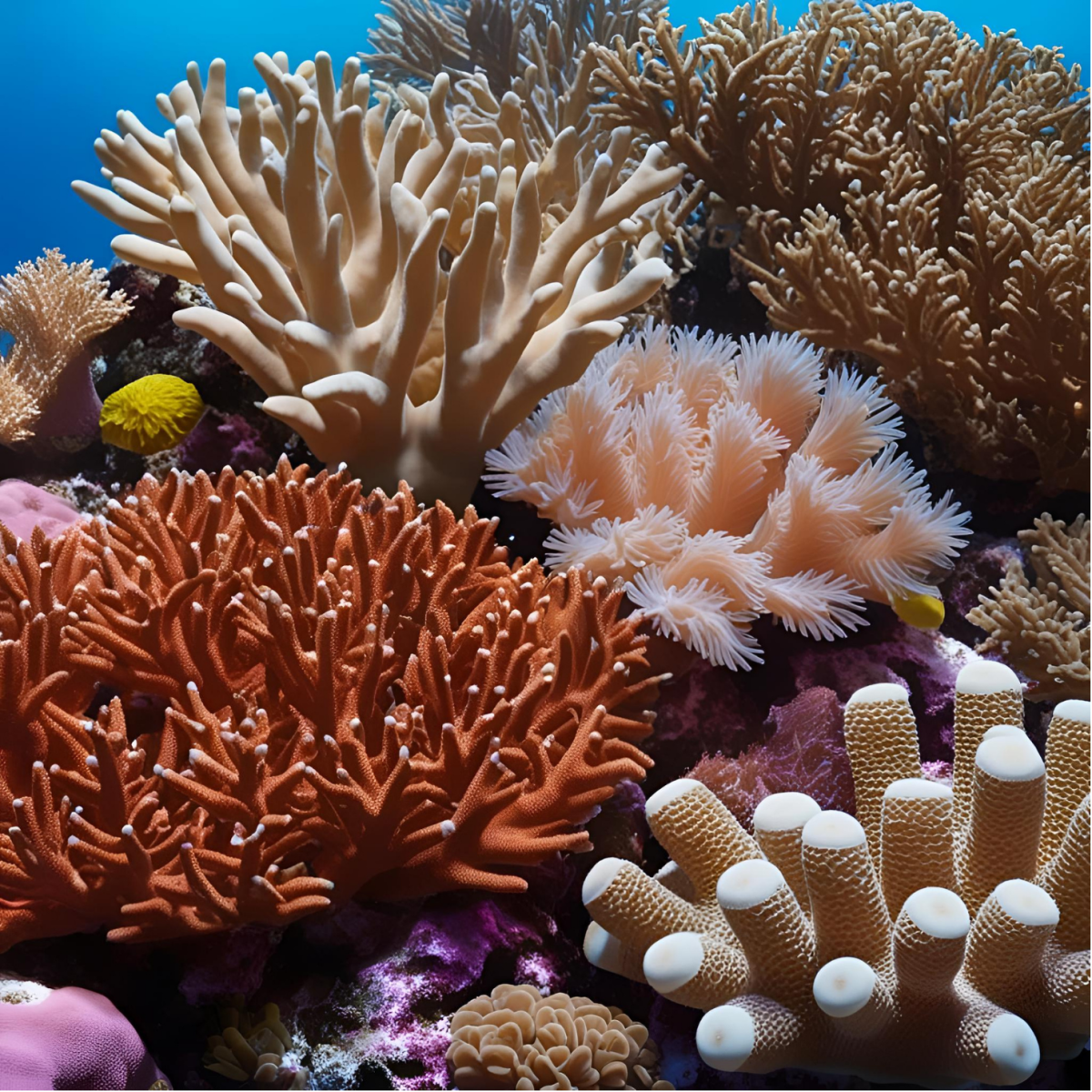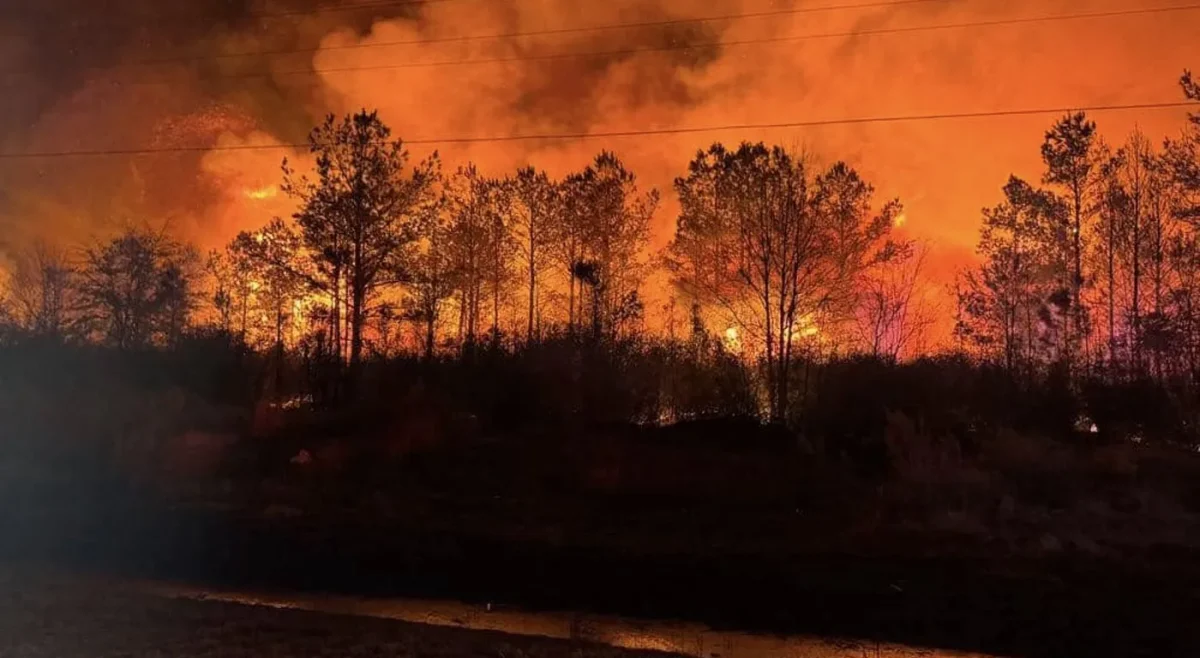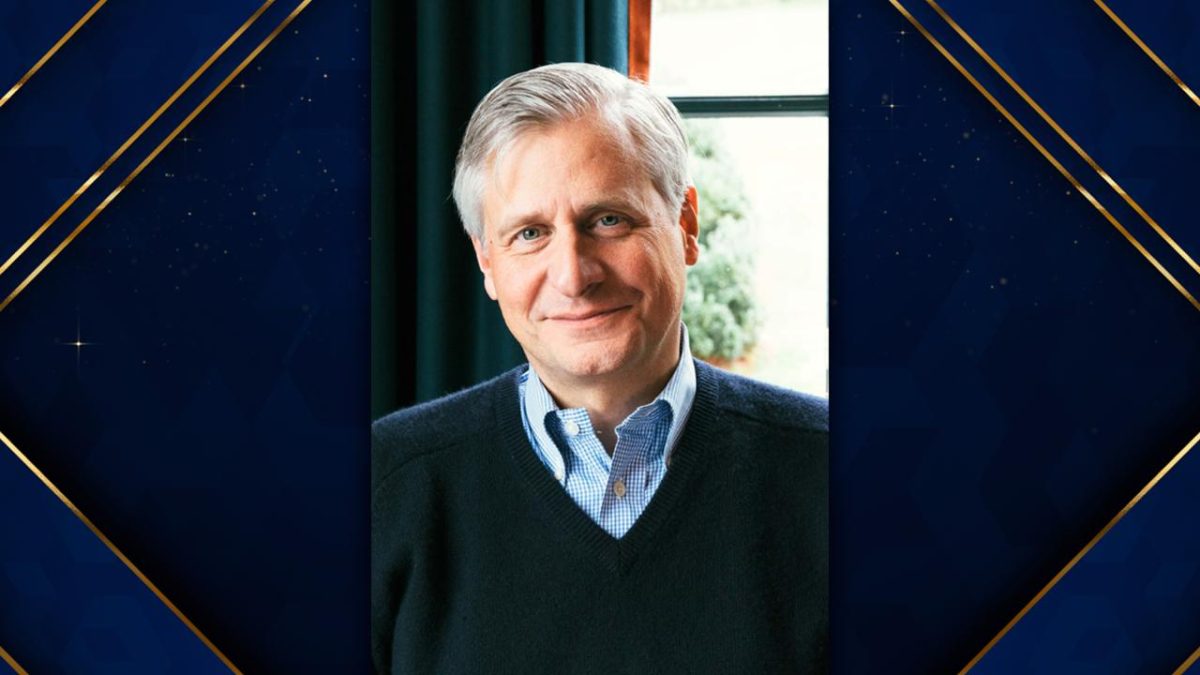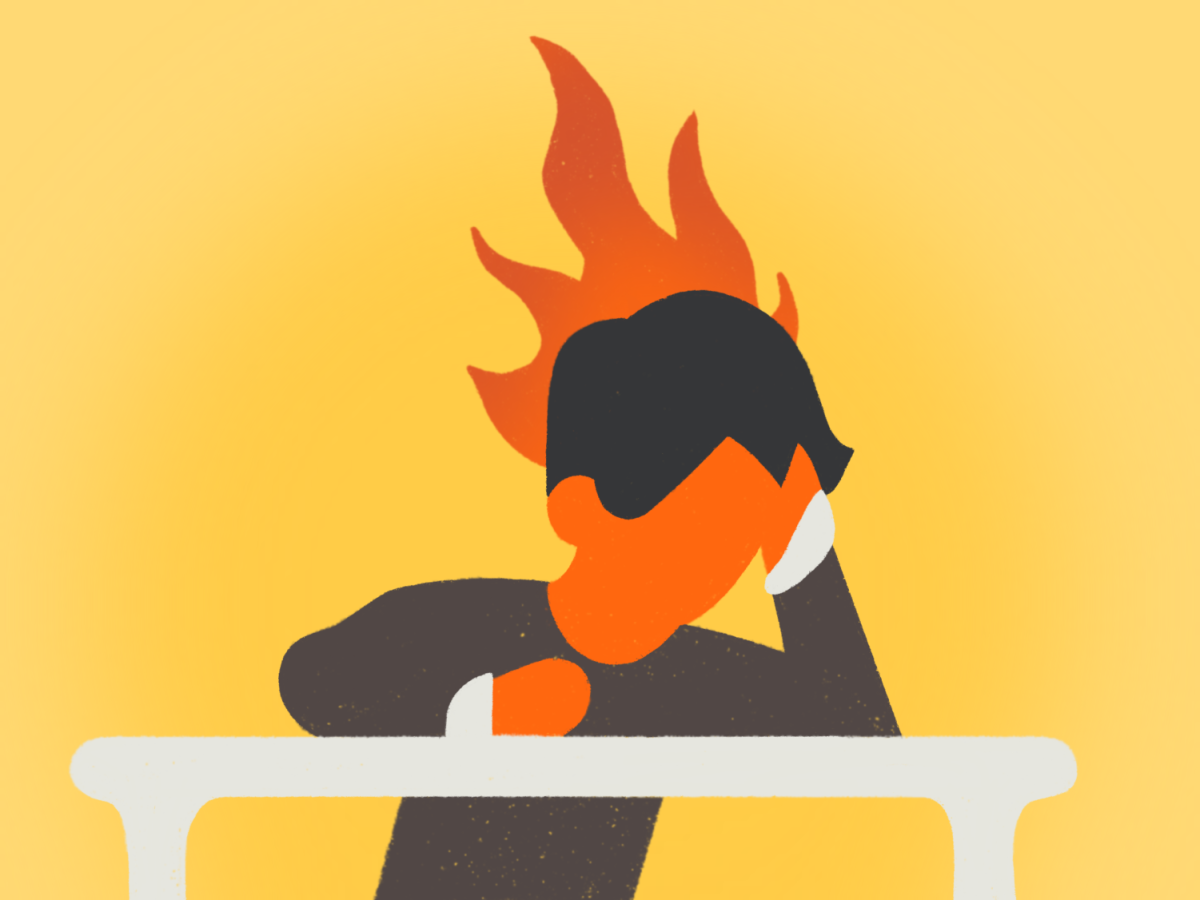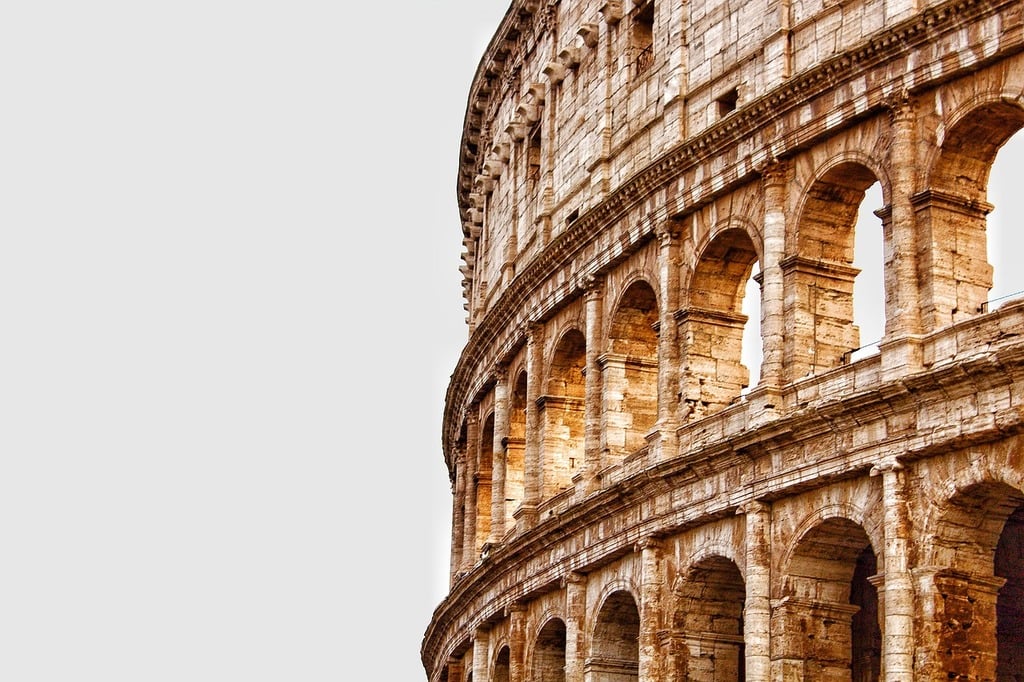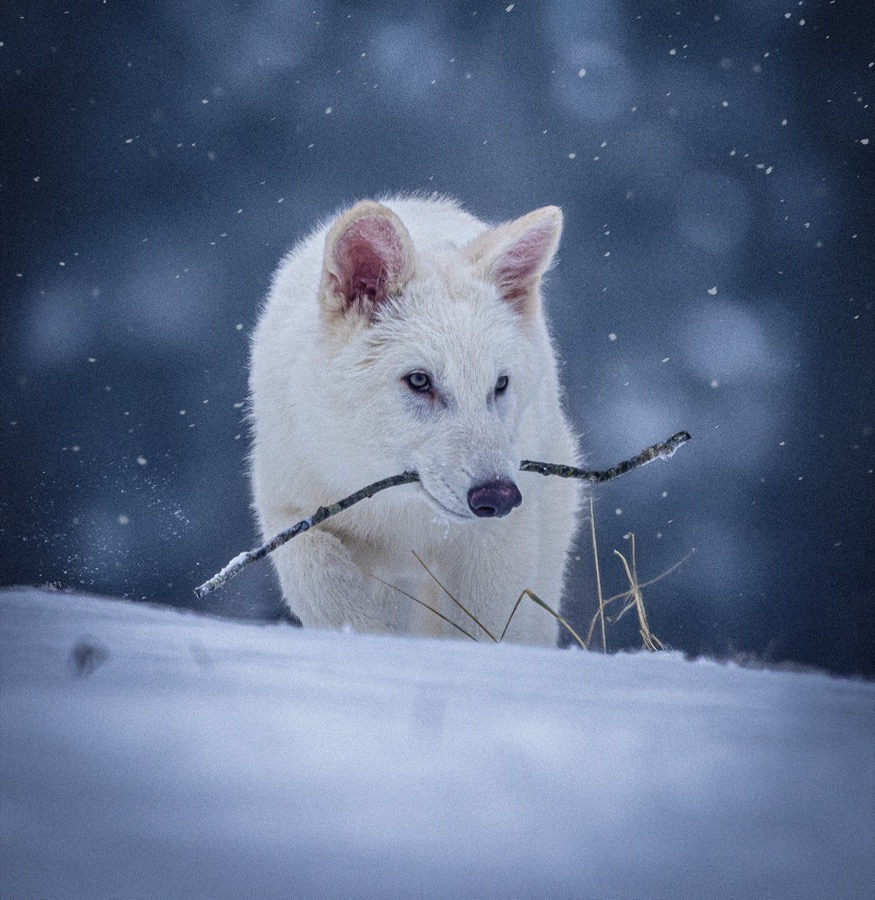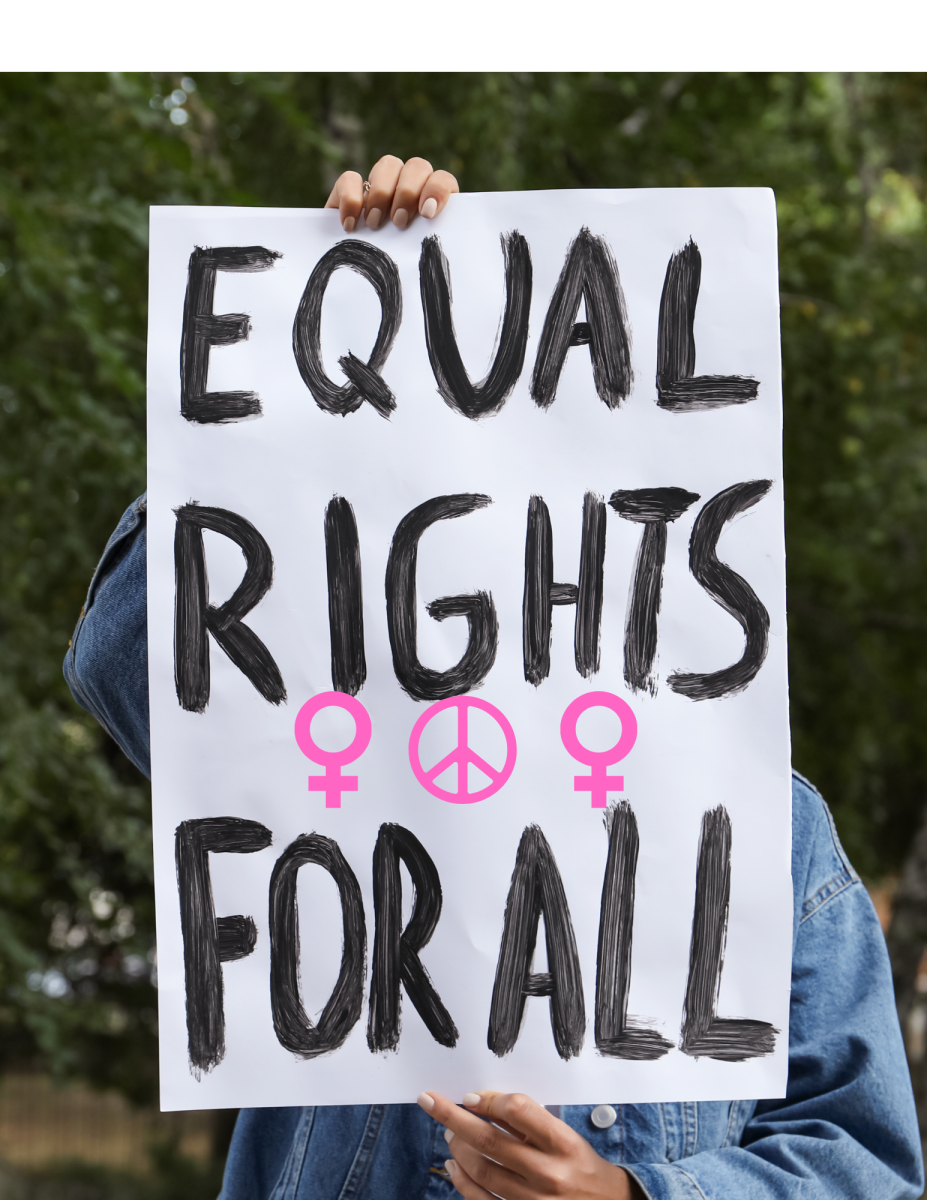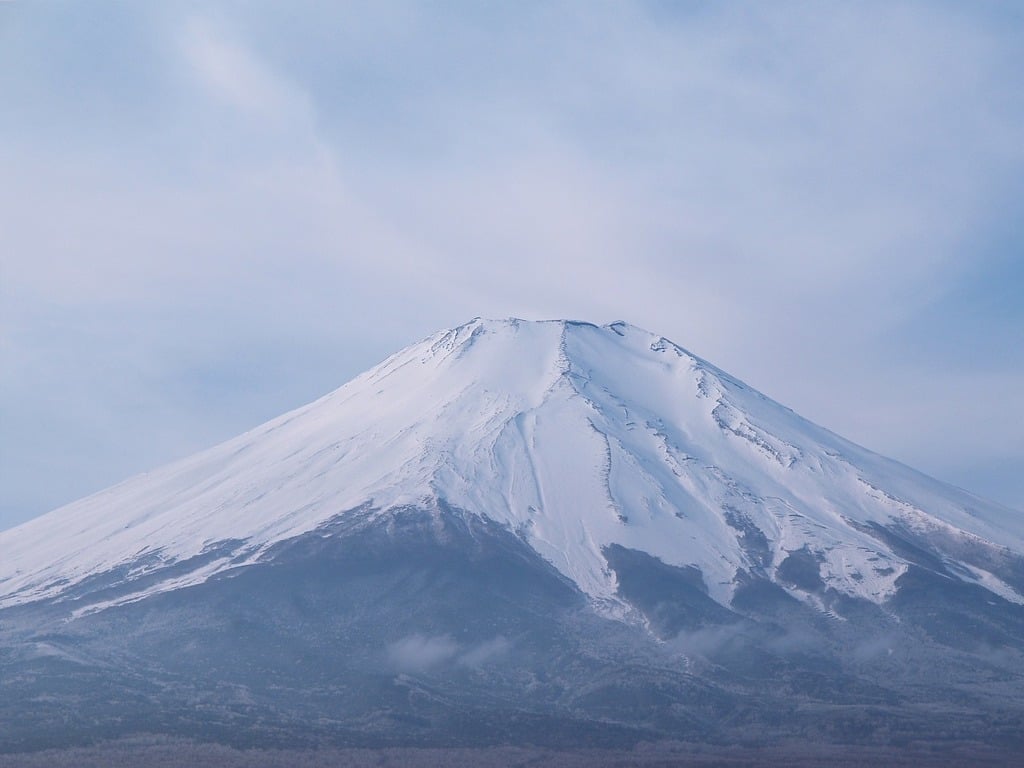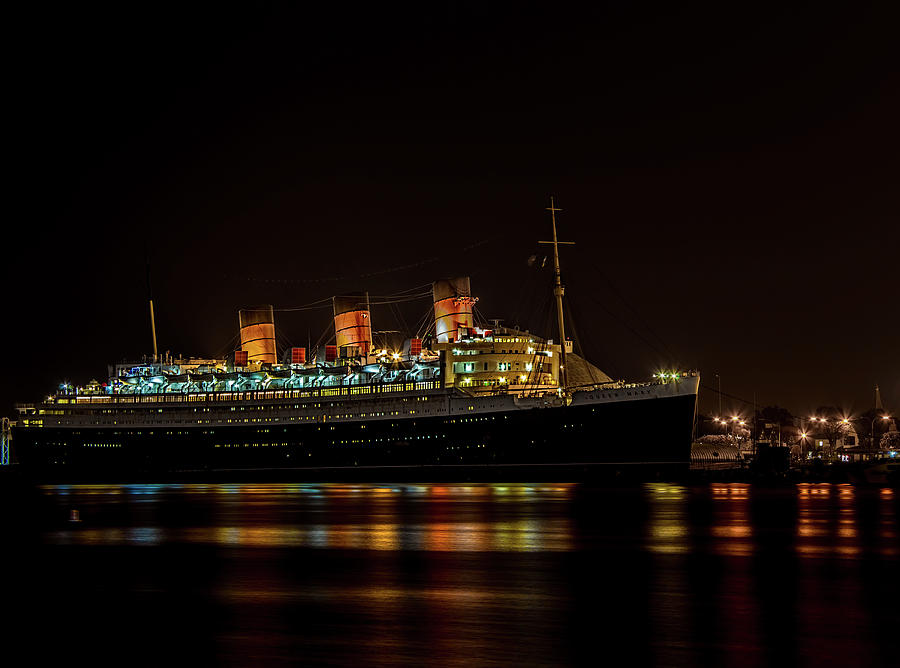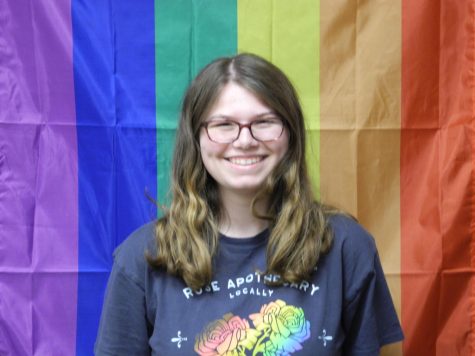When comparing the fashion styles between the years 1919 and 1980, it is obvious that they are completely different. It would be hard to believe that these styles were around in the same century. What inspired these major changes to men’s and women’s attire, specifically from the roaring 20s to the 40s? And what types of clothing, shoes, accessories, and hairstyles were popular at that time?
1920’s:
————————————————————————————————————-
Fresh out of the Great War and the Influenza pandemic, the world sought a happier and brighter future. The U.S. economy was booming, and gender roles were changing. All of this, plus the ever-popular Art Deco style, carried over into the fashion world of the 20s.
Women’s Fashion:
Typically, women of this time could be seen sporting a more “tomboy” look in terms of what women’s fashion used to be in previous decades. The look of the time was the Flapper style. The dresses worn by women at the time were draped silhouettes that didn’t hug any of the women’s feminine curves. It also featured a shorter hemline that started in 1926, which hadn’t been permissible for older girls and adult women.
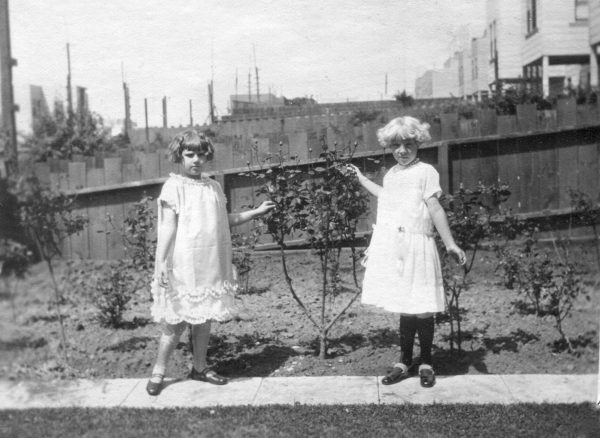
For hair, the bob was “the do of the decade”. At first, the bob was mostly seen on female actors in movies and women doing stage performances before it went mainstream.
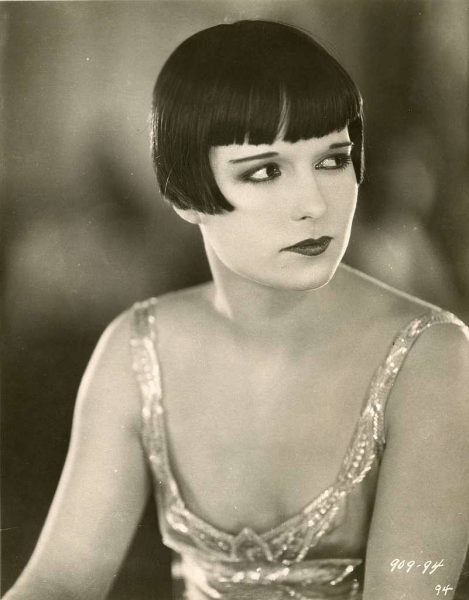
One of the more trendy hats at the time was the Cloche. The Cloche looked similar to a helmet, making it perfect for wearing with a bob.
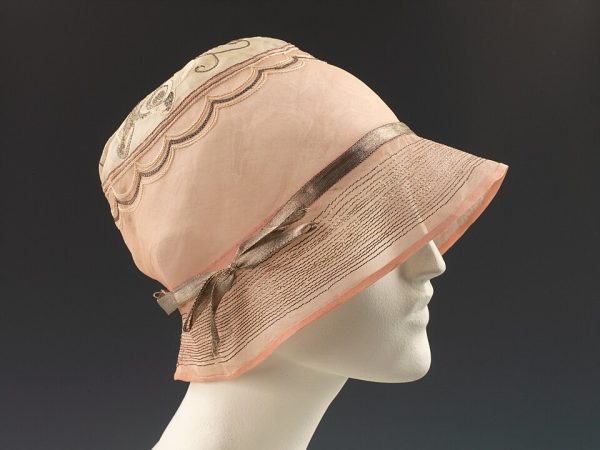
One of the lesser-known styles of the decade was the Romance Silhouettes. These silhouettes showcased a bit of leg and an expansive skirt, but they did not reveal the waist.
Men’s Fashion:
Suits had changed from 3 pieces to 2, getting rid of the waistcoat that came along with the suit. Pinstripes, tweeds, and flannels were all popular styles for these suits. Oxford bags became a trend alongside bowler hats. Another one of the more popular hats of the time was the Fedora, which was worn with casual wear. Facial hair became scarce for younger men due to the Great War. Gas masks worn during that time were hard to wear over big mustaches popular in previous decades. The trend of shaving beards and mustaches continued into the new decade.
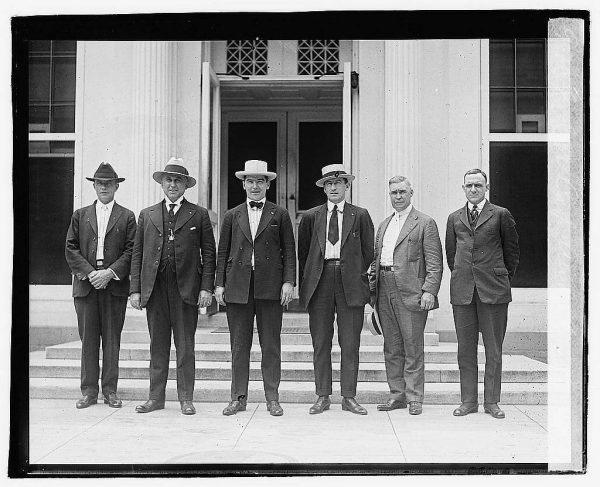
1930’s
——————————————————————————————————————–
While Art Deco influenced the 20s style, the 30s were influenced by Neoclassicism. In this era, what was unpopular in the previous decade blossomed into popularity again. It was now all about the ‘glorious female form’. This style became majorly popular because of the hardships during this decade, including the Great Depression, the Dust Bowl, and the outbreak of World War 2. The ideals from ancient Greece fuelled an escape for artists of the time.
Women’s Fashion:
“For the first time in Western fashion history, dresses skimmed a body that wasn’t sheathed in a sculpting base layer,” Vogue commented when reflecting on fashions of the past, and this was true. While popular dresses at the time may have had a pliable girdle to smooth things out, they didn’t feature any snatched waists. Another new and admired style in dresses was the backless dress. Since hemlines for the dress had descended back down to the floor, these types of dresses were elegant and fancy, perfect for evening wear.
Although there were a lot of disagreements on when and where it was appropriate to wear pants, they rose in popularity for women in the mid-30s. Long pants weren’t the only things that gained popularity; shorts and culottes were also on the rise. Although not seen as appropriate everywhere, pants were commonly seen on women at work, playing sports, or out at sea. But parties, luncheons, or other day-to-day activities? Not so much.
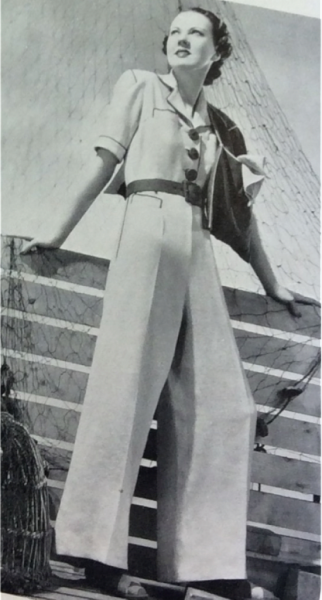
During the Great Depression, not many people could afford to participate in the fashion trends of the time. Fortunately, new technological developments had created synthetic fabrics that made clothing more affordable. The more fashionable of the bunch were fiber rayon and nylon. These fabrics became widely used and continue to be used in clothing today.
Men’s Fashion:
Most of the men’s fashion trends of the 30s hadn’t changed since the previous decade. Hats were still very popular, but it wasn’t considered unacceptable for young men to skip out on wearing them. The flat cap was one of the most popular hats among the working class, but fedoras and bowler hats were still popular. Clean-shaven faces were just as popular in the 30s as the 20s, except for the thin pencil mustache. Wide-lens glasses became popular, especially for older men.
The 30s saw the attached collar become big in the U.S., but collars were still available to be purchased by themselves. Attached collars made sense for the U.S. due to the rising popularity of wearing casual shirts. Ties were also still commonly worn, but they were much shorter than they are today. Vests and waistcoats were still worn during this period, but they weren’t required due to central heating.
1940’s
———————————————————————————————————
Fashion during the 40s had two rivaling styles: one that started at the beginning of the decade and the other at the end. WW2 influenced the look at the beginning of the decade, while the one at the end was a completely new, often celebrated, look.
Women’s Fashion:
Due to the war, many of the fabrics used to make clothing during previous decades weren’t readily available, so clothes started to be made with alternative materials. Woolen skirt suits became very trendy for women in the workplace. The suit was made with wool to save other materials needed for the war. The wool skirt suit was made to imitate men’s suits while staying traditional and classy.

In previous decades, hats for women were big and designed as a fashion statement, but in the 40s, hats shrank in size. They were now used for more practical purposes, such as keeping hair out of one’s eyes while working in factories. Shoes at the time had become more sturdy. Materials such as cork and ropes that made espadrilles, the popular flat shoe, were used to make shoes as a replacement for leather, which was unavailable due to the war.
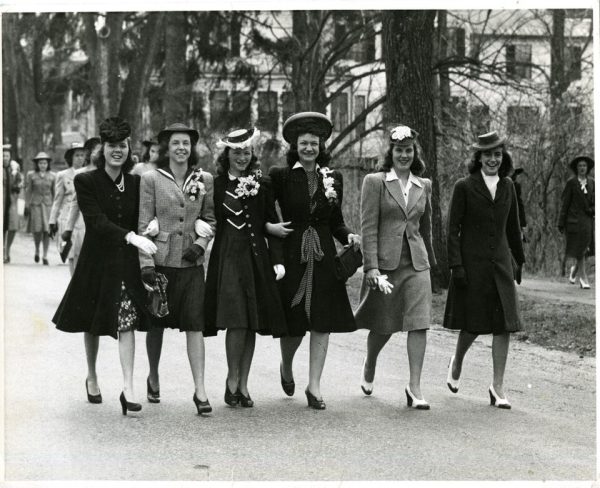
Also, in previous decades, Parisians and other French designers often started fashion trends. Due to the ongoing war in Europe, American designers stepped up and led the trends. Postwar, the French stepped back into dictating what the rest of the decade would look like in the fashion world.
Christian Dior’s 1947 collection started “the New Look,” which would influence fashion not only in the postwar 40s, but also many trends in the 50s. This new look was completely different from the current fashion of the time. This look created what would be known as the 50s silhouette, and the dresses featured flowing skirts that left people in awe.
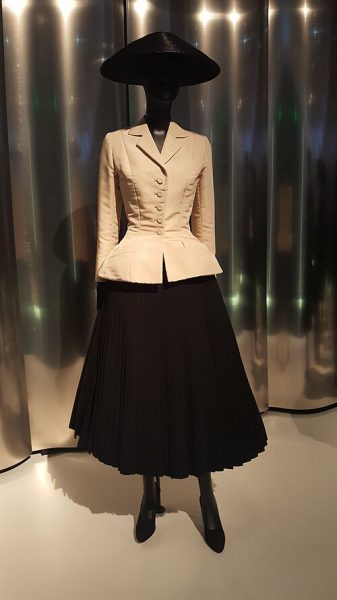
Men’s Fashion:
Much like women’s fashion of the time, many clothing styles were chosen for practicality and rationing, which limited the amount of fabric that could be used outside war efforts. During this time, it wasn’t uncommon to see people wearing “out-of-date” clothes, especially men, because of the ongoing war. Hats and shoes at the time were good examples of this. It was common to see old hats and shoes worn, and there weren’t any new, popular styles until the end of the decade.
At the time, a well-groomed look was very popular for hair and facial hair. Slicked-back hair with short sides and long on top was the popular hairstyle during the late 40s. A clean-shaven look, like in the 30s, was also fashionable.
Formal dress shirts were still the normal attire, although these formal shirts became what we know today as dress shirts because of fabric rationing. Apart from formal shirts, casual shirts were also on the rise. Ties of the time became bold and colorful with different patterns. And, like shirts, tie fabric was rationed, and became thinner and smaller. Pants also had similar restrictions. Due to the rationing of fabric, men were expected to wear slim-cut trousers. However, some youth who felt rebellious ignored these restrictions and wore baggier pants. These suits were called Zoot Suits.
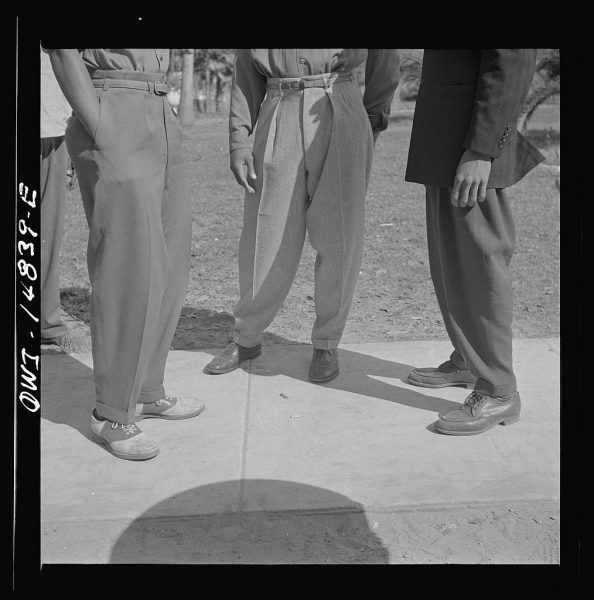
——————————————————————————————————–
Even past the 40s, fashion continued to change and evolve into what we know today. These fashions were influenced by the upcoming decades of the 50s, 60s, and 70s.
Credit:
https://www.vogue.com/tag/misc/fashion-through-the-decades
https://www.gentlemansgazette.com/what-men-wore-1920s/
https://www.gentlemansgazette.com/what-men-wore-1930s/
https://www.gentlemansgazette.com/what-men-really-wore-in-the-1940s/
Photo credit:
https://commons.wikimedia.org/wiki/File:1920s_Fashions_for_young_Flappers_in_San_Francisco.jpg
https://picryl.com/media/film-actress-louise-brooks-sayre-13807-5f416a
https://commons.wikimedia.org/wiki/File:Evening_cloche_MET_67.110.39_CP3.jpg
https://picryl.com/media/six-men-standing-in-a-row-at-one-of-the-capitol-doors-aug-5-1920
https://itoldya420.getarchive.net/amp/media/vera-borea-beach-pyjama-jumpsuit-1935-july-f31898
https://www.worldhistory.org/article/2542/interview-french-fashion-during-the-german-occupat/
https://commons.wikimedia.org/wiki/File:Dior_denver_art1.jpg
https://picryl.com/media/daytona-beach-florida-bethune-cookman-college-zoot-suits
https://itoldya420.getarchive.net/amp/media/zootsuit2-dffe3c


